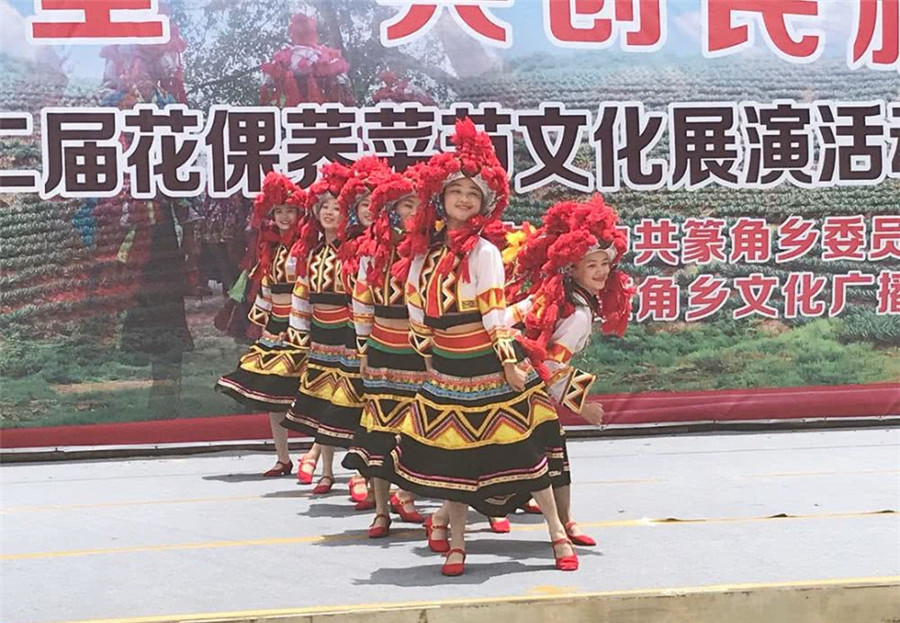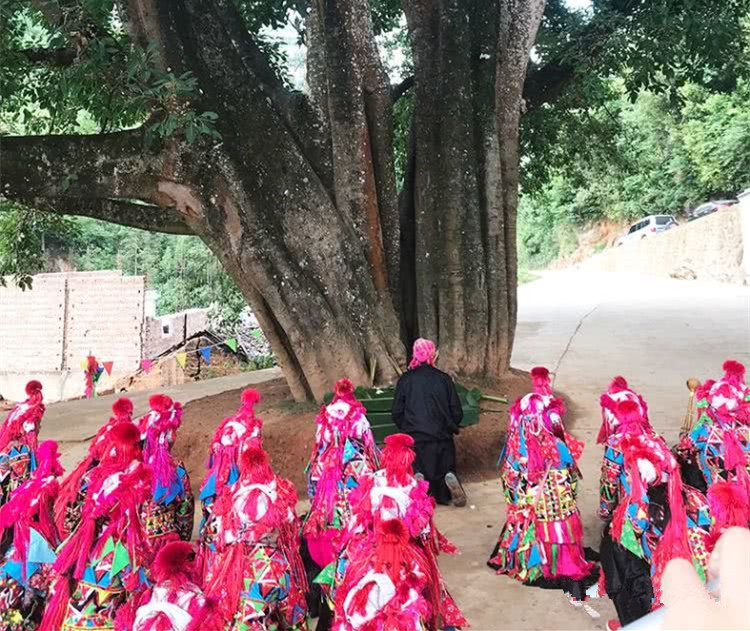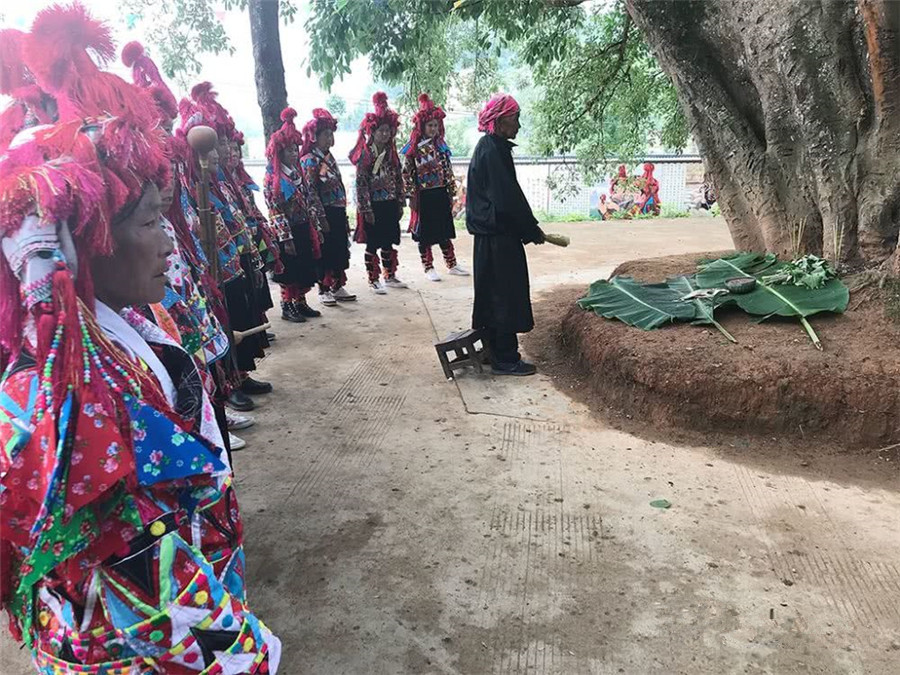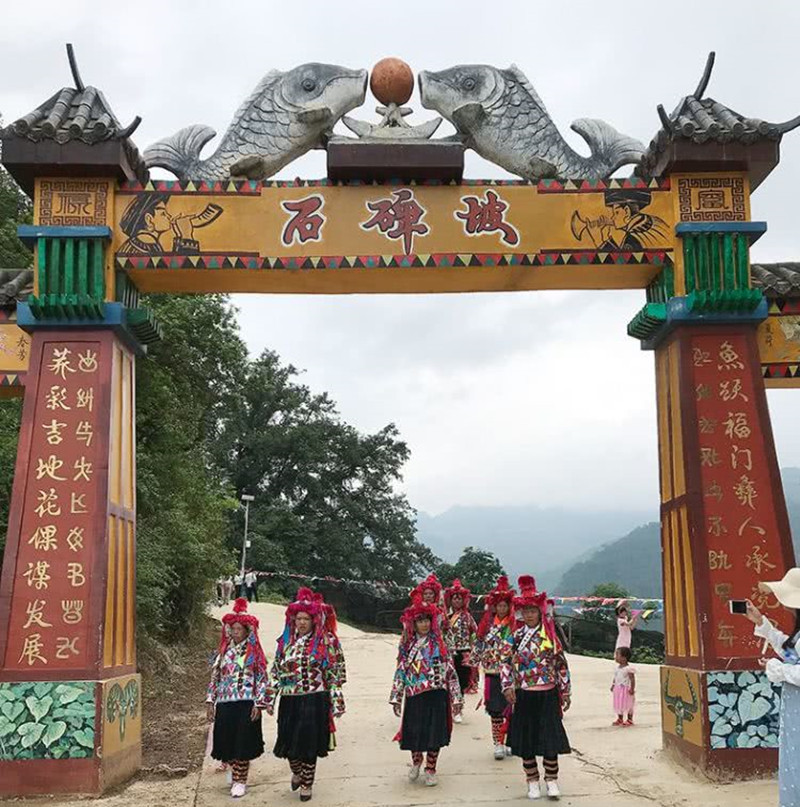
Qiaocai (Buckwheat) Festival of Hualuo Ethnic People in Guangnan County, Wenshan
- Chinese Name: 广南县花倮人荞菜节
- English Name: Qiaocai (Buckwheat) Festival of Hualuo Ethnic People in Guangnan County, Wenshan
- Location: Hualuo Ethnic People in Guangnan County, Wenshan
- Festival Date: On the first Dragon Day of the fourth month of the lunar calendar every year.
Introduction
In the primeval forests of Malipo County in the southeastern corner of Yunnan Province, there lives a branch of the Yi ethnic group with a population of only over 4,000, who call themselves the Luoren people. More than 50 years have passed since the establishment of New China, and electric lights and televisions have entered every household, but the traditional customs here have not changed much. Some quite ancient practices are still in use, such as their continued avoidance of intermarriage with other ethnic groups. The houses in the village still do not have glass windows, and modern door locks are absent, truly creating a paradise where “no one picks up what is left on the road, and doors are left unlocked at night.” Their lives are very peaceful and happy. During the most grand festival of the year, the “Buckwheat Festival,” they perform the joyful Luoren dance passed down from their ancestors, beat bronze drums, and use glutinous rice to make large cakes for ancestor worship. The women of the Luoren community are very resourceful; some, even without formal education, can weave sturdy fabrics, create beautiful patterns using wax dyeing, and sew lovely clothing and skirts.

Legend
It is said that in ancient times, there was a great fire in a Yi village that burned down all the houses, leaving no furniture or grain intact. The people not only found themselves without food to eat, but they also had no seeds left for planting, and they were all immersed in deep sorrow. Just when everyone was at a loss, someone discovered a bowl lying overturned on the charred foundation of a burned house. Upon opening it, they found that some buckwheat seeds had not been burned. Thus, they took these seeds to plant in the fields. The buckwheat sprouted quickly and matured by the fourth or fifth month, allowing the Yi people to survive the famine. Therefore, in gratitude for the relief that buckwheat provided, they established the first Dragon Day of the lunar calendar every year as the Buckwheat Festival.
The main ritual of the Buckwheat Festival involves organizing people to call the “soul of the buckwheat” back home from the fields and bringing it to the upper floor.
The Buckwheat Festival is as lively as the Spring Festival. In addition to inviting the “soul” of the buckwheat upstairs, people also slaughter pigs and chickens to offer sacrifices to their ancestors. Dishes served during the festival must include buckwheat and fresh fish.
During the festival, after completing various sacrificial rituals, people gather to sing, perform the “Tuo Xianzi” dance, and dance the “Hulusheng” dance. The joyful atmosphere lasts throughout the day and night. Unmarried young men and women take the opportunity to flirt and revel, creating a lively scene.
Buckwheat is one of the main staples for many Yi people living in mountainous areas. Throughout the historical development of Yi society, the status and role of buckwheat among all grains are exceptional. The Yi people, especially those living in the mountains, have a special reverence for buckwheat, which can be seen during the activities of the Buckwheat Festival.

Customs
Generally, every year on the first Dragon Day of the fourth month of the lunar calendar, the Yi community holds the “Buckwheat Festival” with great ceremony. On this day, people primarily eat fish and buckwheat, with pork and dog meat served as well. It is said that the dragon’s staple food is fish and that it also eats buckwheat, which helps enhance the brilliance of the dragon’s scales. Thus, eating fish and buckwheat on this day enables people to be brave and strong like a dragon. On this day, people wear red and green, sing lively mountain songs, play the lusheng (a type of musical instrument), and dance elegantly. Spectators fill the mountains and valleys, creating a bustling and joyous atmosphere.
The Buckwheat Festival of the Bai Luoren people is the most grand and significant festival of the year.
According to legends, in ancient times, a massive fire broke out in the Bai Luoren village, engulfing the houses, and no grain was left unburned. People live by food, and those who lost their crops felt as if they had lost their backbone, completely immersed in sorrow. During this time, a villager unexpectedly found a few seeds of buckwheat under an overturned bowl. The villagers saw a glimmer of hope for survival. They rallied and planted the buckwheat seeds. Buckwheat is cold-resistant, drought-resistant, and highly adaptable, sprouting quickly and maturing by May and June. Buckwheat helped the Bai Luoren people survive the disaster. In gratitude for the life-saving benefits of buckwheat, the first Dragon Day of the lunar calendar was established as the Buckwheat Festival, a tradition that continues to this day.
The Buckwheat Festival lasts for two days, but preparations begin well in advance. First, the host for the festival must be selected. The buckwheat seeds are considered sacred, and choosing the host must not be taken lightly; it must be done by the village’s learned and respected Bimo (a shaman) through divination in the first month of the lunar calendar. Only middle-aged men with complete families, harmonious marriages, and healthy children have a chance to be selected. The chosen host enjoys great prestige during his lifetime among the Bai Luoren people and will also receive protection from ancestral spirits after death. Additionally, during the Buckwheat Festival, four to five young girls will be dressed as dragon maidens, and their ancient-style clothing must be sewn well ahead of time.
On the day of the Buckwheat Festival, early in the morning, all the villagers, young and old, dress in beautiful new clothes, and children wear silver necklaces and long-life locks. After breakfast, summoned by the host, all the village children gather in the largest courtyard of the village, beating gongs, singing, and dancing.
In the minds of the Bai Luoren people, children are innocent and good-hearted, able to communicate with ancestral spirits. Their song and dance mark the beginning of the festival, expressing reverence for their ancestors and enhancing the joy of the celebration.
Around noon, a group of young men, led by the host, gathers at the Bimo’s house. The Bimo recites the bronze drum scriptures, and then everyone solemnly brings out the bronze drum. In Bai Luoren belief, the bronze drum is also a sacred object that embodies a spirit, possessing immense power. It helps people avert disaster and assists them in achieving great things.
Once the bronze drum sounds, the children dance even more joyfully. Some adults, unable to contain themselves, join in the dance, which continues late into the night, with excitement culminating around midnight before gradually calming down.
The next day, the Bimo, holding sacred objects, along with village leaders and respected elders, goes to the buckwheat fields outside the village to sacrifice chickens and perform divination for the coming year’s fortune. Afterwards, the Bimo recites the buckwheat soul scriptures, and everyone shouts together, calling the buckwheat spirit back. The summoned “buckwheat spirit” returns to the village with them, honored with the most elaborate rituals and welcomed into each household’s ancestral altar. At this time, the sounds of crowing chickens and grunting pigs fill the air as families begin to offer sacrifices to their ancestors and honor the buckwheat spirit. The dishes prepared on this day are the most sumptuous of the year, with buckwheat and fresh fish being essential.
After each household prepares their dishes, a man is selected to carry the sacrificial offerings to the dragon tree at the village entrance.
The buckwheat dance reaches its climax in the evening. The dance troupe is led by the host, dancing towards the west, south, and north outside the village, accompanied by grand dance movements and shouts of “Lili.” Upon reaching the village edge, each dancer breaks two twigs to bring back home, and starting from the village entrance, they throw a twig into each family’s granary, symbolizing a blessing for abundant harvests in the coming year. The once quiet mountain village is lively through the night, continuing until dawn.


 7 Days GolfingTour
7 Days GolfingTour
 8 Days Group Tour
8 Days Group Tour
 8 Days Yunnan Tour
8 Days Yunnan Tour
 7 Days Shangri La Hiking
7 Days Shangri La Hiking
 11 Days Yunnan Tour
11 Days Yunnan Tour
 6 Days Yuanyang Terraces
6 Days Yuanyang Terraces
 11 Days Yunnan Tour
11 Days Yunnan Tour
 8 Days South Yunnan
8 Days South Yunnan
 7 Days Tea Tour
7 Days Tea Tour
 8 Days Muslim Tour
8 Days Muslim Tour
 12 Days Self-Driving
12 Days Self-Driving
 4 Days Haba Climbing
4 Days Haba Climbing
 Tiger Leaping Gorge
Tiger Leaping Gorge
 Stone Forest
Stone Forest
 Yunnan-Tibet
Yunnan-Tibet
 Hani Rice Terraces
Hani Rice Terraces
 Kunming
Kunming
 Lijiang
Lijiang
 Shangri-la
Shangri-la
 Dali
Dali
 XishuangBanna
XishuangBanna
 Honghe
Honghe
 Kunming
Kunming
 Lijiang
Lijiang
 Shangri-la
Shangri-la
 Yuanyang Rice Terraces
Yuanyang Rice Terraces
 Nujiang
Nujiang
 XishuangBanna
XishuangBanna
 Spring City Golf
Spring City Golf
 Snow Mountain Golf
Snow Mountain Golf
 Stone Mountain Golf
Stone Mountain Golf














